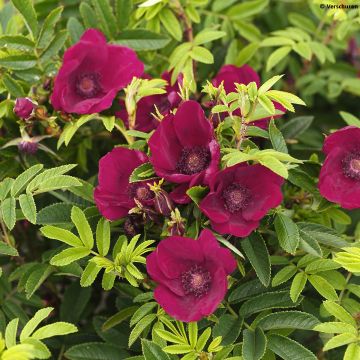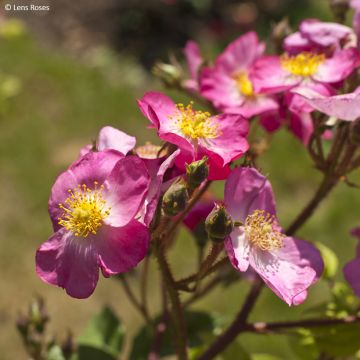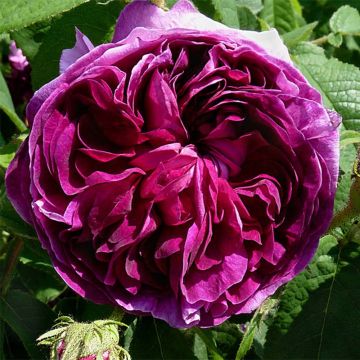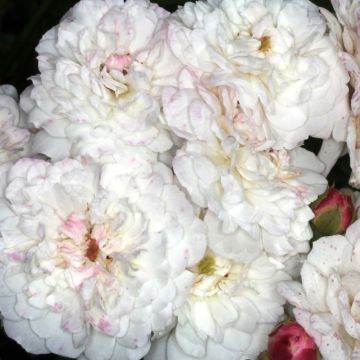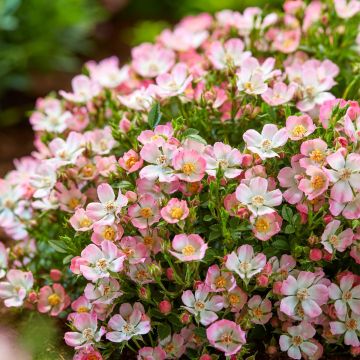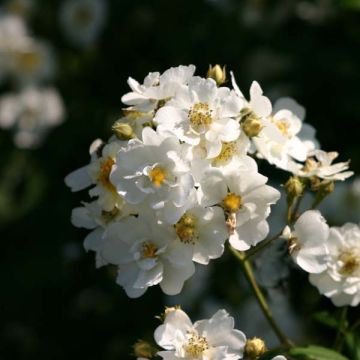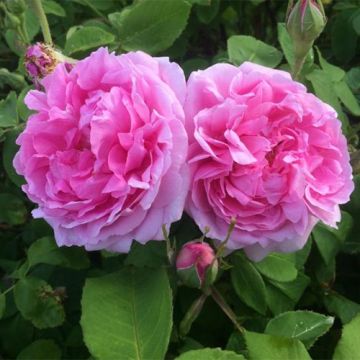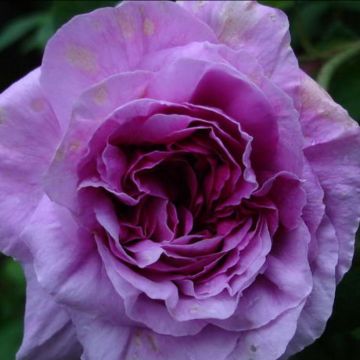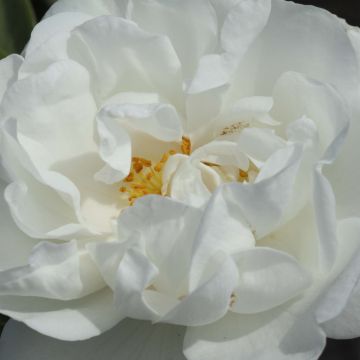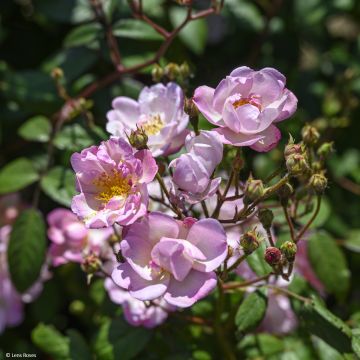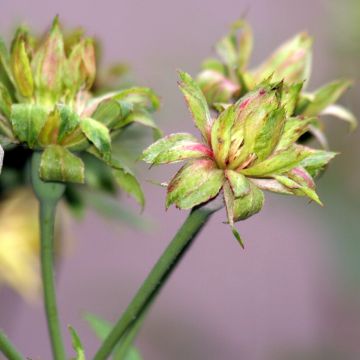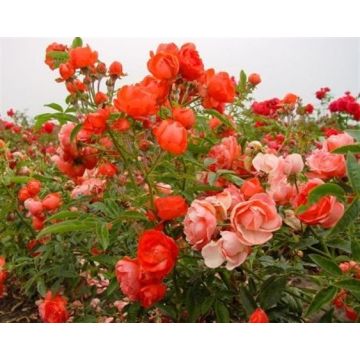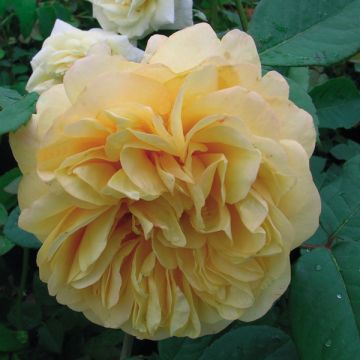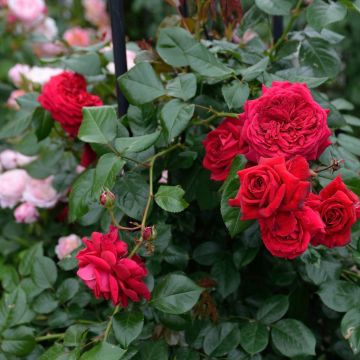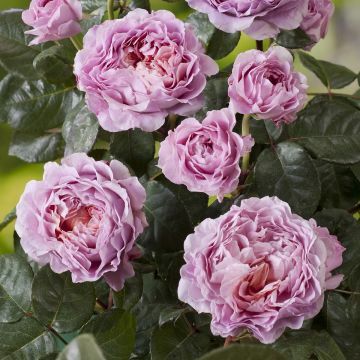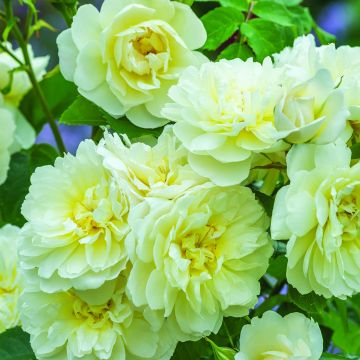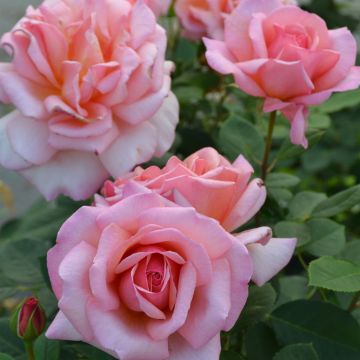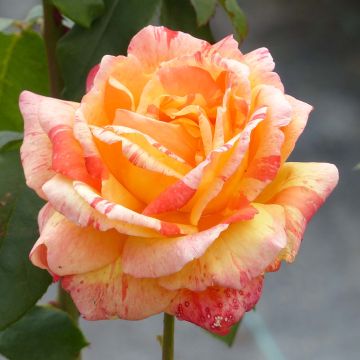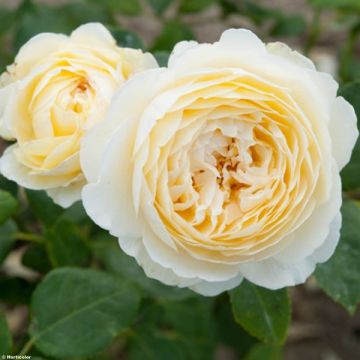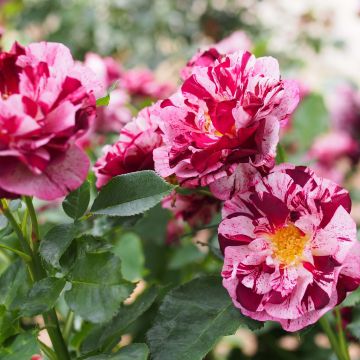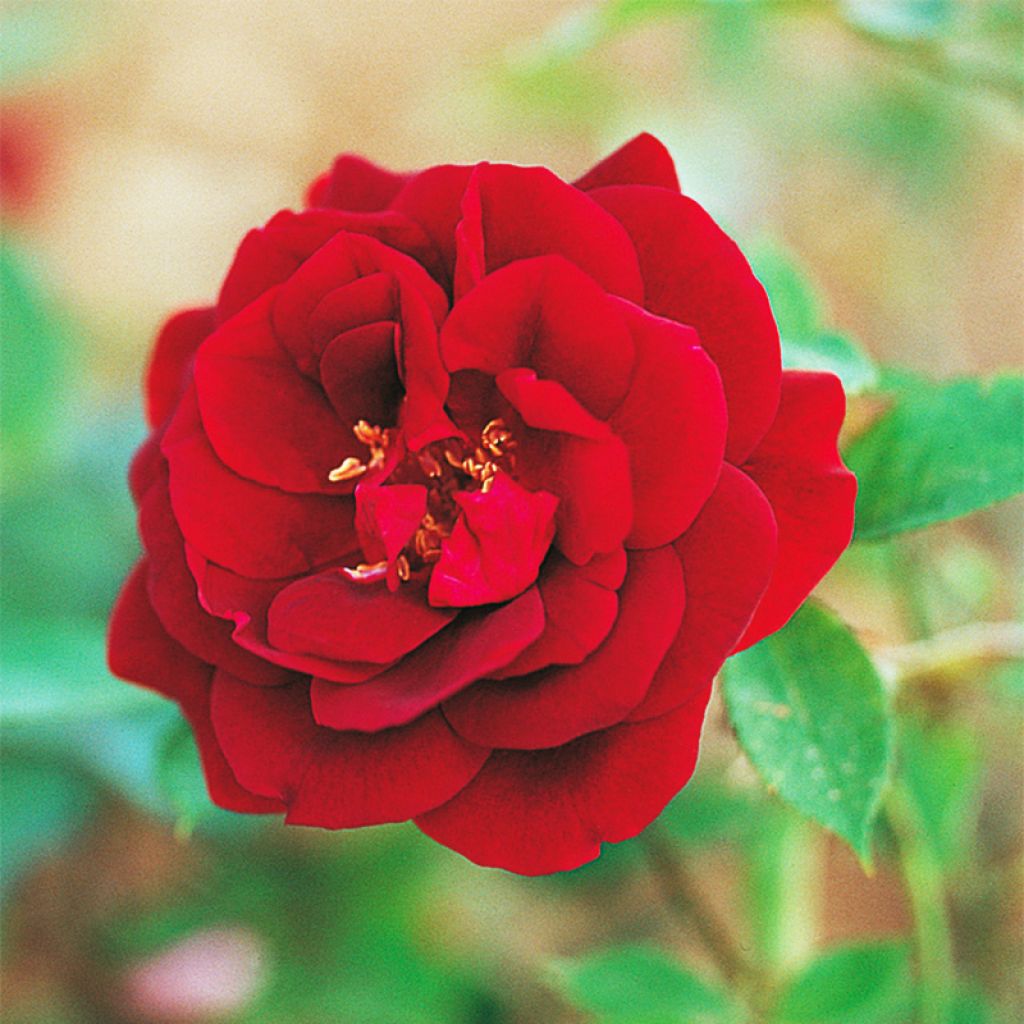

Rosa Louis XIV- China Rose,
Rosa Louis XIV- China Rose,
Rosa x chinensis Louis XIV
China Rose, Chinese Rose
No complaints.
MICHEL M., 16/03/2017
Why not try an alternative variety in stock?
View all →This plant carries a 24 months recovery warranty
More information
We guarantee the quality of our plants for a full growing cycle, and will replace at our expense any plant that fails to recover under normal climatic and planting conditions.
From €5.90 for pickup delivery and €6.90 for home delivery
Express home delivery from €8.90.
From €5.90 for pickup delivery and €6.90 for home delivery
Express home delivery from €8.90.
Delivery to Corse prohibited: UE law prohibits the import of this plant from mainland France to Corse as part of the fight against Xylella fastidiosa. Please accept our sincere apologies.
More information

Does this plant fit my garden?
Set up your Plantfit profile →
Description
The 'Louis XIV' Rose is an old hybrid of the China Rose, which forms a small, graceful and ramified bush, majestic despite its modest size under its summer coat, sprinkled with double roses of the darkest red. It offers modest but sumptuous, turbinate flowers, whose petals seem to be cut from a thick velvet garnet populated with black reflections. Its flowering, with the scent of tea rose, renews itself throughout the summer. This enchanting but somewhat weakly structured bush clearly prefers the mildness of warm climates. Rose enthusiasts in less favorable climatic zones will adopt this little gem in a beautiful ceramic pot on the terrace, to be stored away from severe frost in winter.
The 'Louis XIV' rose, sometimes marketed under the name 'Nigrette' rose, is a very old horticultural hybrid, obtained in 1859 in France by the rose grower Guillot. Like many old roses related to Rosa chinensis, hardiness is not its strong point. This bushy shrub will not exceed 80cm (31.5in) in height and 60cm (23.6in) in width, with a rather slow growth. Its deciduous foliage is carried by slender, sparsely prickly stems. Its colour is a beautiful medium bluish-green, with a very shiny appearance. It blooms from June to September-October, regularly. From rounded buds with purple hues, double flowers with a slightly informal shape, about 8cm (3.1in) wide, emerge, formed by 20 to 39 very large, velvety petals, a nearly black red on the outside, slightly lighter in the centre. Just before fading, they reveal a golden yellow stamen centre. The scent of these roses is medium to strong, pleasant, typical of tea roses.
The 'Louis XIV' rose is intended for gardens spared by severe frost, as its hardiness does not exceed -12°C (10.4 °F) in very healthy soil. Its cultivation, somewhat delicate, will be reserved for experienced gardeners and seasoned collectors, who will choose a well-suited location for it, in front of a shrub bed and along a pathway, or near a passage, to admire its almost black roses up close and breathe in their sweet fragrance. It also deserves to be planted in scented gardens, among evergreen foliage of white or silver bushy artemisias, which enhance the "black" flowers. Soft pink flowers, such as masterworts and asters, will flatter it while providing welcome shade. This small variety thrives very well in a large pot on the terrace.
Report an error about the product description
Rosa Louis XIV- China Rose, in pictures
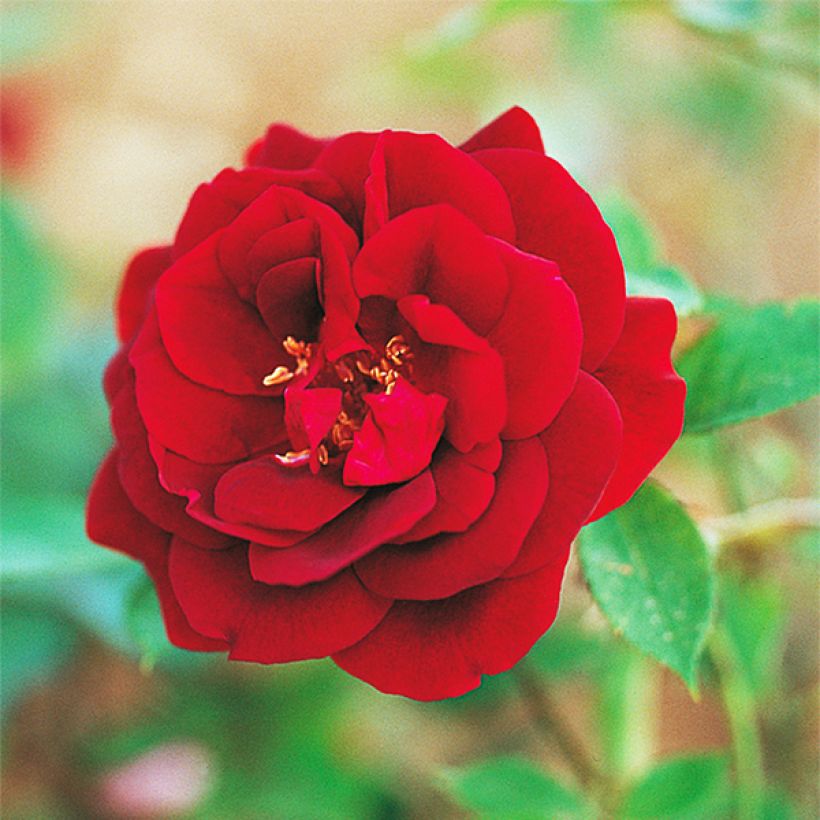

Plant habit
Flowering
Foliage
Botanical data
Rosa
x chinensis
Louis XIV
Rosaceae
China Rose, Chinese Rose
Cultivar or hybrid
Rosa canina Laxa (Wrapped bare root, 4L/5L pot)
Other Traditional Roses
Planting and care
Plant your 'Louis XIV' Rose in a sunny or partially shaded position in a warm climate. Old roses are tolerant but do not appreciate excessive limestone. They will adapt to any garden as long as the soil is well worked, not too heavy, and sufficiently rich. To plant your rose, work the soil well, crumble the earth, and place an amendment such as dried blood or dehydrated horn at the bottom of the planting hole. Water generously after planting to remove air pockets, and during dry weather in the first two years. Water regularly for a few weeks to facilitate rooting.
This somewhat delicate rose will require frequent organic matter input and magnesium fertilizers. To maintain proper foliage, it may be necessary to treat against fungal attacks in spring. While it doesn't appreciate the cold, it will be equally damaged by excessive heat, so consider planting perennials at its base to shade the often bare area.
Roses are often stained or unsightly in late summer, but it is not a problem for their development. These spots are not harmful to the rose; it is a natural phenomenon.
Planting period
Intended location
Care
-
, onOrder confirmed
Reply from on Promesse de fleurs
Fragrant Roses
Haven't found what you were looking for?
Hardiness is the lowest winter temperature a plant can endure without suffering serious damage or even dying. However, hardiness is affected by location (a sheltered area, such as a patio), protection (winter cover) and soil type (hardiness is improved by well-drained soil).

Photo Sharing Terms & Conditions
In order to encourage gardeners to interact and share their experiences, Promesse de fleurs offers various media enabling content to be uploaded onto its Site - in particular via the ‘Photo sharing’ module.
The User agrees to refrain from:
- Posting any content that is illegal, prejudicial, insulting, racist, inciteful to hatred, revisionist, contrary to public decency, that infringes on privacy or on the privacy rights of third parties, in particular the publicity rights of persons and goods, intellectual property rights, or the right to privacy.
- Submitting content on behalf of a third party;
- Impersonate the identity of a third party and/or publish any personal information about a third party;
In general, the User undertakes to refrain from any unethical behaviour.
All Content (in particular text, comments, files, images, photos, videos, creative works, etc.), which may be subject to property or intellectual property rights, image or other private rights, shall remain the property of the User, subject to the limited rights granted by the terms of the licence granted by Promesse de fleurs as stated below. Users are at liberty to publish or not to publish such Content on the Site, notably via the ‘Photo Sharing’ facility, and accept that this Content shall be made public and freely accessible, notably on the Internet.
Users further acknowledge, undertake to have ,and guarantee that they hold all necessary rights and permissions to publish such material on the Site, in particular with regard to the legislation in force pertaining to any privacy, property, intellectual property, image, or contractual rights, or rights of any other nature. By publishing such Content on the Site, Users acknowledge accepting full liability as publishers of the Content within the meaning of the law, and grant Promesse de fleurs, free of charge, an inclusive, worldwide licence for the said Content for the entire duration of its publication, including all reproduction, representation, up/downloading, displaying, performing, transmission, and storage rights.
Users also grant permission for their name to be linked to the Content and accept that this link may not always be made available.
By engaging in posting material, Users consent to their Content becoming automatically accessible on the Internet, in particular on other sites and/or blogs and/or web pages of the Promesse de fleurs site, including in particular social pages and the Promesse de fleurs catalogue.
Users may secure the removal of entrusted content free of charge by issuing a simple request via our contact form.
The flowering period indicated on our website applies to countries and regions located in USDA zone 8 (France, the United Kingdom, Ireland, the Netherlands, etc.)
It will vary according to where you live:
- In zones 9 to 10 (Italy, Spain, Greece, etc.), flowering will occur about 2 to 4 weeks earlier.
- In zones 6 to 7 (Germany, Poland, Slovenia, and lower mountainous regions), flowering will be delayed by 2 to 3 weeks.
- In zone 5 (Central Europe, Scandinavia), blooming will be delayed by 3 to 5 weeks.
In temperate climates, pruning of spring-flowering shrubs (forsythia, spireas, etc.) should be done just after flowering.
Pruning of summer-flowering shrubs (Indian Lilac, Perovskia, etc.) can be done in winter or spring.
In cold regions as well as with frost-sensitive plants, avoid pruning too early when severe frosts may still occur.
The planting period indicated on our website applies to countries and regions located in USDA zone 8 (France, United Kingdom, Ireland, Netherlands).
It will vary according to where you live:
- In Mediterranean zones (Marseille, Madrid, Milan, etc.), autumn and winter are the best planting periods.
- In continental zones (Strasbourg, Munich, Vienna, etc.), delay planting by 2 to 3 weeks in spring and bring it forward by 2 to 4 weeks in autumn.
- In mountainous regions (the Alps, Pyrenees, Carpathians, etc.), it is best to plant in late spring (May-June) or late summer (August-September).
The harvesting period indicated on our website applies to countries and regions in USDA zone 8 (France, England, Ireland, the Netherlands).
In colder areas (Scandinavia, Poland, Austria...) fruit and vegetable harvests are likely to be delayed by 3-4 weeks.
In warmer areas (Italy, Spain, Greece, etc.), harvesting will probably take place earlier, depending on weather conditions.
The sowing periods indicated on our website apply to countries and regions within USDA Zone 8 (France, UK, Ireland, Netherlands).
In colder areas (Scandinavia, Poland, Austria...), delay any outdoor sowing by 3-4 weeks, or sow under glass.
In warmer climes (Italy, Spain, Greece, etc.), bring outdoor sowing forward by a few weeks.

































